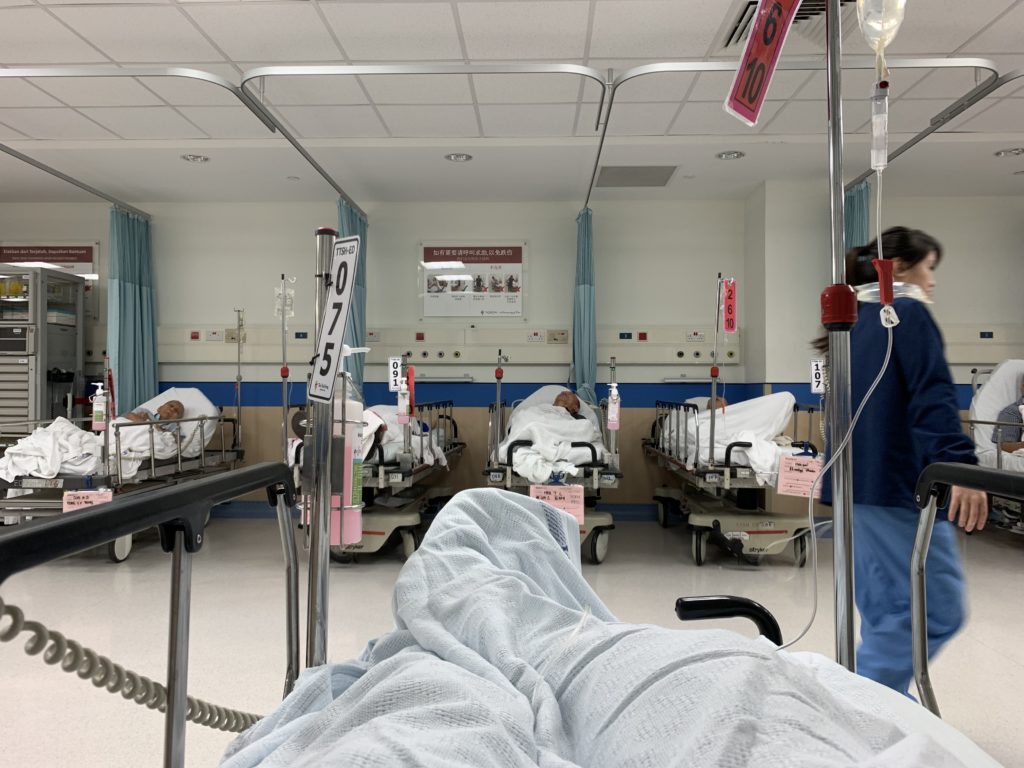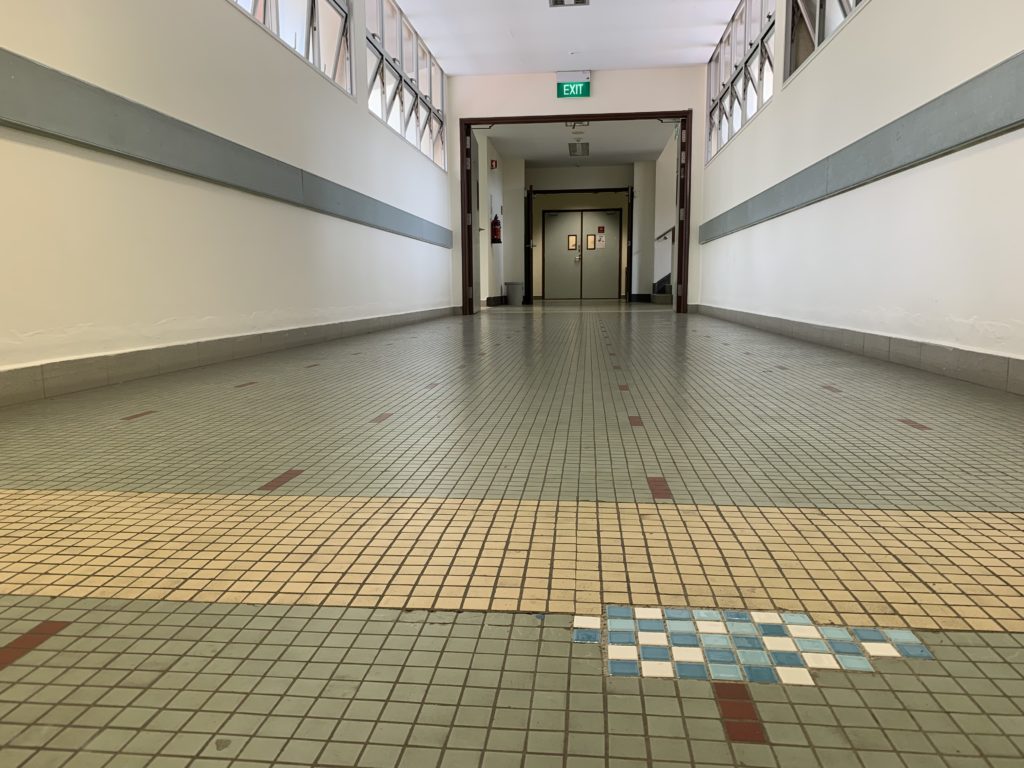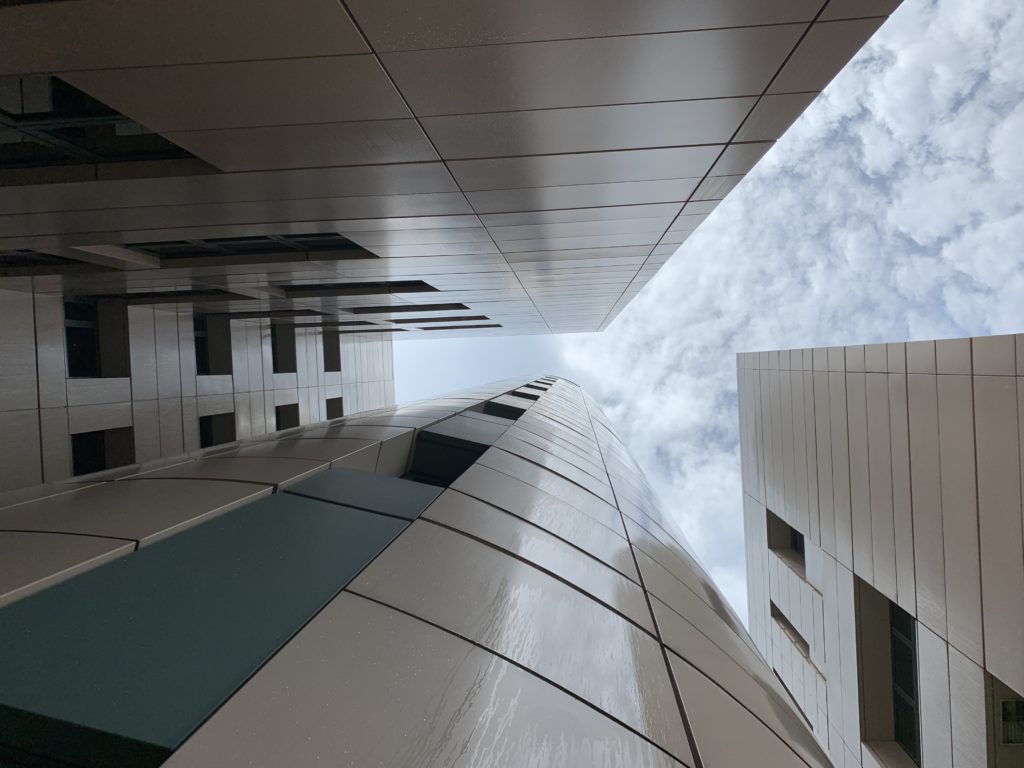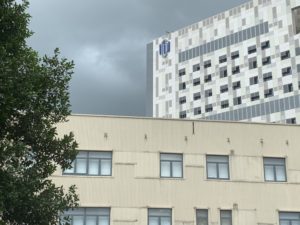Some people start the year binge drinking at a manic New Year’s Eve party. Some start it with a list of neatly written resolutions. And others start it with an early night in bed, ignoring the festivities and fireworks to face the new year bright and early.
I spent the first week of January in hospital.
How did I get there? It all started with an ill-fated calisthenics workout. Not having done anything like this before, I went for a beginner class, which turned out to be an advanced form… of torture. It was tough, to say the least. And the instructor should really have modified the exercises that he made the beginners (Carolyn and I) do versus the rest of the class, who were regulars.
The thing about exercise is that it needs to be gradual; muscles need conditioning to get accustomed to increasing weight and stress. You don’t climb Everest on a whim. Or tackle 45 pull-ups in thirty minutes.
The day after the workout. I could not straighten my arms. I was like a velociraptor, dangling my useless arms and roaring at everyone. I thought it was the usual muscle fatigue after a particularly strenuous workout.
Two days after, my arms started to swell up. I was pleasantly surprised at first to have such large forearms after just one round of calisthenics. But as the day wore on, they ached and I started to feel acutely dehydrated. That’s when I knew something was really wrong.
Saturday night. A&E at Tan Tock Seng Hospital. The attending doctor looked a bit worried after she got my urine and blood test results. She put me on a drip and said I had to be warded. I had done some googling beforehand and found that the worst case scenario was a rare, but not unheard of condition called rhabdomyolysis. Here’s what WebMD has to say:
And one of the causes of rhabdo is extreme muscle strain, for example, an overdone calisthenics workout.
 So there I was, waiting six hours in a bed in a room full of hacking old men for a bed in a ward. One gentlemen even pooped in the gurney next to me. The smell was… incredible.
So there I was, waiting six hours in a bed in a room full of hacking old men for a bed in a ward. One gentlemen even pooped in the gurney next to me. The smell was… incredible.
The results for my creatine kinase levels came back. My worst fears were realised. Rhabdo the Terrible had come. It was 70,000 units per litre (U/L). In a normal person, that level should be between 20-200 U/L.
My arms were like jelly. I was unable to prop myself up. An IV line dripped lifesaving fluids through my veins. I downed up to 5L of water daily. In the days to come, the CK level spiked to 80,000 U/L before steadily dropping.
There was lots of time to read, to worry about my PhD research and to dwell upon the vagaries of life in a hospital ward. I had opted for B2 class, which meant a 5-bed ward, but due to a shortage of space I was (fortunately!) offered a single room in a recovery ward which used to house the CDC. It wasn’t exactly quiet though, as nurses frequently yelled to each other down the length of the hallway and a very noisy old man yelled “OI!” at regular intervals to get attention. I assumed he was in pain, but he frequently followed it up with a string of choice curse words, so I wonder whether he was simply chafing at the ignominy of being in hospital.
When I did feel better, I went for a walk down the corridor…
 and peeked outside, feeling hemmed in like this fleeting glimpse of the sky.
and peeked outside, feeling hemmed in like this fleeting glimpse of the sky.
 Fortunately, after a week of this, my levels dropped to 7,000 U/L. Still very high by regular standards, but good enough for me to go home. So I said goodbye to my bed for a week and celebrated with a soy ice-cream from Mr Bean.
Fortunately, after a week of this, my levels dropped to 7,000 U/L. Still very high by regular standards, but good enough for me to go home. So I said goodbye to my bed for a week and celebrated with a soy ice-cream from Mr Bean.
The last time I was warded was almost thirty years ago, and it felt like a combination of being confined to the bunk during ICT with room service (including blood pressure tests) being offered at all hours. Not terrible, but not something I would like to repeat anytime soon.







